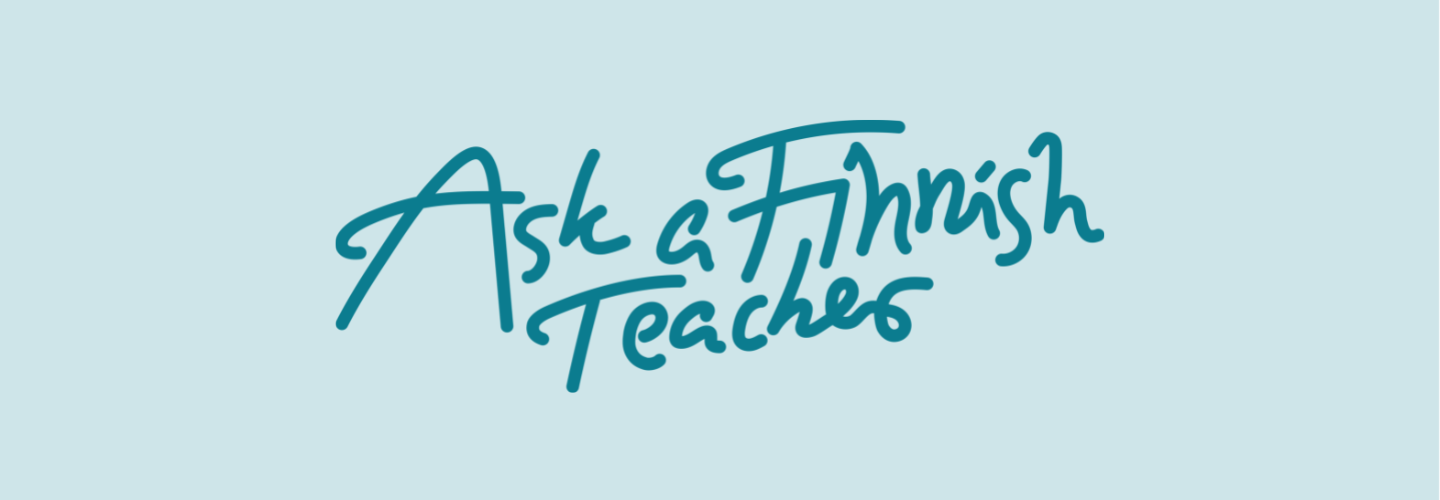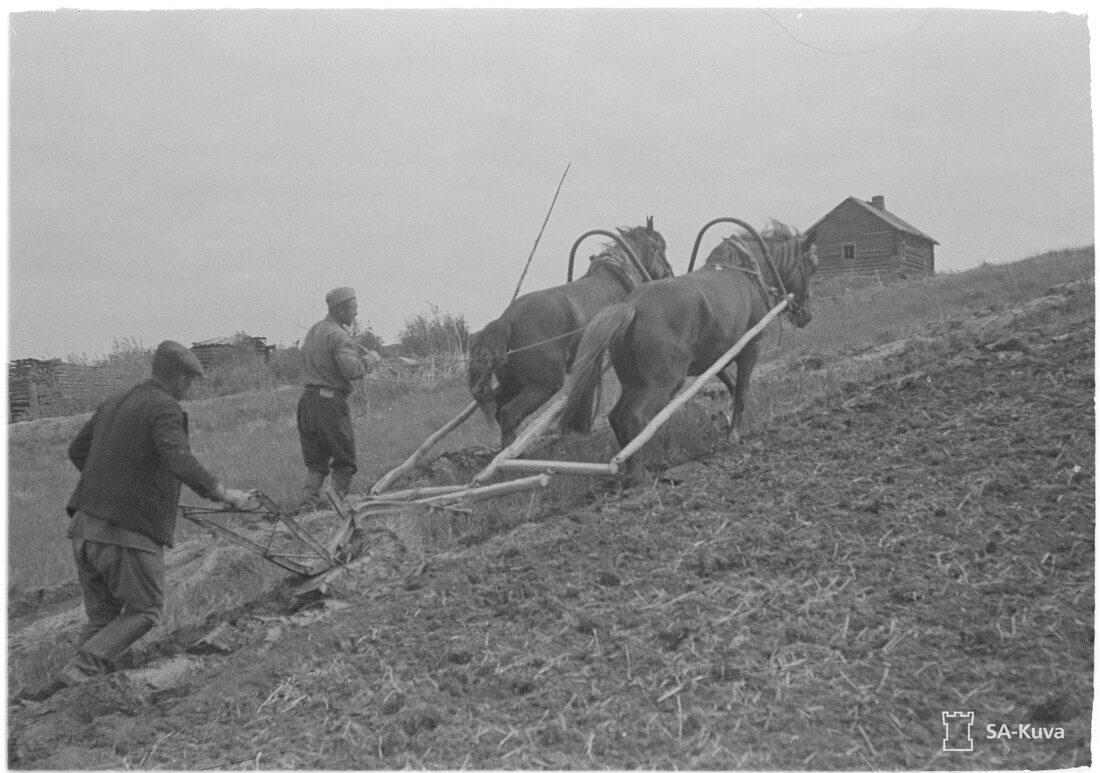|
1. Just listen. A key part of learning any language is getting used to how it sounds. What kind of music is Finnish? What syllables stand out to you? What is the melody and the rhythm of the language like? It doesn’t matter if you don’t understand a word of it, just listening to spoken Finnish is extremely beneficial. Our brains are masters of detecting and learning patterns, and your brain will automatically start trying to make sense of any language you expose it to. For most small children learning their first language or languages, this alone will eventually lead to speaking the language perfectly, but we adults need to do a lot more active work. However, we don’t lose that skill entirely when we grow up, and it’s good to take advantage of it! 2. Pay attention to prosodic features. Prosodic features are the musical properties of language, like melody and rhythm. Take any recording of spoken Finnish that you can replay over and over again, and intentionally listen for patterns. Where does the melody rise, and when does it fall? Usually, the key words of any given conversation stand out somehow – usually they’re spoken more loudly and clearly than the rest. 3. Practice pronunciation. I pay a lot of attention to pronuciation in my classes. The main reason for this is that I find that learning how to pronounce different sounds and prosodic patterns is by far the quickest and easiest way to learn how to recognize them when you hear them, which makes it easier to catch those key words and understand what’s going on. Of course pronouncing Finnish well is also helpful in making yourself understood, but there are many, many ways of pronouncing Finnish well. Your accent always reflects where you come from, and that should be celebrated, not erased. As long as you can distinguish between the different sounds and main prosodic features, you’re speaking well enough to be understood. For the purpose of practicing these sounds and patterns, it’s a good idea to mimic and exagerrate what you’re hearing so much that it feels like you’re making fun of the speaker that you’re modeling yourself after. 4. Listen to Finnish music. Music makes learning easier: grammar, vocabulary and idiomatic phrases are often much easier to remember if you’ve leart them from a song. Here’s a fun little website and app called Lyricstraining, where you listen to songs and fill in the missing lyrics. 5. Sing in Finnish. You don’t have to be a good singer to do this, and no one has to hear you do it! Singing will improve your listening comprehension in the same way that more general pronunciation practice will, but it will be much more effient thanks to the music involved! 6. Listen to authentic conversations or to materials that are authentic or sound as authentic as possible. Listening comprehension exercises in textbooks are great practice, but they often lack authenticity. If you live in Finland, listen to the conversations happening all around you. The list is endless: podcasts, the news, sitcoms (like Luottomies on Yle Areena), whatever feels most accessible to you where you are at the moment. Remember tip number 1: you don’t have to understand a single word! Yle Kielikoulu, the Kotisuomessa website and Gimara’s soundcloud are great places to look for authentic and authentic sounding materials to listen to. 7. Learn how spoken Finnish works. If you’ve studied Finnish for a while, you probably already know that Finnish is spoken very differently from how it’s written. This isn’t a question of formal versus informal either: like any language, spoken Finnish has a whole spectrum of registers from very formal to very informal. What we teachers often call “puhekieli” isn’t slang or lazy Finnish, it’s a spoken form of Finnish that is generally understood and spoken all over Finland, but heavily influenced by the local dialect spoken in the Helsinki area. The official term for this form of spoken Finnish is “yleispuhekieli”, sometimes Standard Spoken Finnish in English. Unlike written language, which has clearly defined norms and rules, spoken Finnish has lot of variation, and it’s a good idea to learn about different dialects as well as yleispuhekieli and written Finnish. Not an easy task for the learner, I know! Luckily though, it’s not really that different from written Finnish once you get the basics down, and there are materials to help you with this. This free online course will teach you the basics. 8. Get into those real-life situations! Yes, it’s possible that you won’t understand anything at all at first, but it will get so much easier as you build up more experience. Again, remember tip number one as you go about this! Real life, real time conversations have the great advantage that you can ask for clarification when you need it, and if you have another language in common with the other person, you can begin by replying with other languages as well as Finnish – it doesn’t have to be all or nothing. When I’m with my Norwegian friends, I often understand most of what’s going on right until someone asks me a question, of which I usually don’t understand a single word. I used to panic when this happened, but now I ask for the translation and reply in my own mix of scandinavian languages if I have the energy, or in English if I don’t. After that, they pick back up in Norwegian, and I’m learning loads! 9. Participate in conversation groups. If you’re not ready for real life situations (and even if you are) there are lots of fun, free conversation clubs, groups and language cafés that you can participate in. Some of them are already happening face to face all over Finland (and other countries as well!), and I’m pretty sure there will still be lots of online events to attend even after pandemic times. Listening to other learners speak helps you learn really efficiently, and can also feel safer than a conversation with native Finnish speakers. If you're in Finland, your local library probably has an ongoing conversation group for learners. I myself am a member of a non-profit organization called Mothers in Business, who have a lovely Language Café that I plan to attend again once things in my life (the terrible twos! two working parents!) settle down a bit. If you can’t find anything suitable, consider starting your own club, it’s really efficient and great fun. 10. Give yourself time. Every language learner knows that infuriating feeling: you know you’ve learnt a word or phrase before but can’t remember it. It gets even worse if you keep telling yourself that this should be easy. “I’ve been studying for so long, I shouldn’t be having trouble with this.” When you do this, all your energy and concentration is spent on this “shoulding” instead on listening. Again, easier said than done, but: when you stop shoulding all over yourself, and start approaching conversations with an open mind, understanding what’s going on gets so much easier. If you've been studying Finnish for quite a while now but still struggle to understand what's going on around you, my upcoming course Puhetta! for levels B1 and B2 might be just the thing. Check it out here! Picture by SplitShire
A reader asks: I’m interested in your YKI course, but I wanted to ask first about the format of the YKI. Can you explain what the test is like? My answer: Always happy to help! For readers not yet familiar with YKI, this is short for Yleinen kielitutkinto, which is a standardized language examination needed, among other things, when applying for Finnish citizenship. Now, onto your question: start by taking a look at the official YKI sample tasks. You can find them here: http://ykitesti.solki.jyu.fi/tutustu-testiin/testifin/ If you’re applying for citizenship, you need the intermediate YKI test, so look for “Keskitaso”. The test is composed of four parts, each testing for a different skill (speaking, writing, listening and reading). The exact format of the test varies from test to test, but the task types should stay the same. The intermediate speaking test happens in a classroom with other examinees. You’ll be sitting in front of a computer with headphones on, and you’ll hear recorded prompts that you have to react to. There are tasks where you have to react to short prompts in real time and tasks where you have to talk about a topic for a more extended period of time, usually 1–2 minutes. In my online courses, you practice the same type of test at home. However, if you can, it’s great idea to practice this beforehand in a face to face situation, which you can do at many schools that organize Finnish courses. Check out this website for a pretty comprehensive listing of what’s available right now. In the writing test, you often write two messages, an informal and formal one, and an essay where you express your opinion on an assigned topic. For listening and reading, you have multiple choice questions, correct or false -questions and open enden questions where you write the answer yourself. At least at the moment, the test is not done on a computer, but with a pencil and paper, the old fashioned way. In my intermediate YKI course, we practice all the different task types and do a practice test on both speaking and writing. You will also receive feedback on your writing and speaking, and learn new vocabulary and grammar that will serve you well in the test, as well as in real life. My October YKI course still has three spots left, and the early bird price 79 € (normal price 99 €) is still valid until Thursday next week. The speaking part of the YKI test happens in a classroom that looks something like this.
Photo by janeb13 Katja asks: Why kpt vaihtelu does not take place in the word maksaa? Why k doesn’t disappear but in nukkua it does? My answer: KPT vaihtelu, KPT-changes or consonant gradation are systematic changes that happen in the different stems of Finnish words. If you’re new to these or just want to brush up on what you know, start by reading this lovely post on the brilliant website Uusi kielemme. For a lot of people, the best answer to your question is “because that’s just the way it is”. Many of my students find that it's the best to just learn the different stems of any word you learn by heart. Luckily, that will also happen naturally and on its own after a while, because you will see and hear them all the time when you’re reading and listening to Finnish. It will just start sounding better to you to say minä maksan and minä nukun. The rules are really nice to know about though, as it helps you remember the patterns and makes it all feel less random. But some people learn best by learning the rules and appliying them. The important thing is to know what works best for you! So, here goes for those who love grammar rules: KPT-changes only happen at the last syllable of the stem, so nukkua - to sleep strong stem: nukku- 2 syllables: nuk-ku The last syllable -ku has a k in it, so a kpt-change happens (kk: k), and the weak stem is nuku- minä nukun, he nukkuvat lukea - to read strong stem: luke- 2 syllables: lu-ke the last syllable ke again has a k in it, so a kpt-change happens (k goes away), and the weak stem is lue- minä luen, he lukevat maksaa stem: maksa- 2 syllables: mak-sa There's no k, p or t in the last syllable, so no kpt changes can happen and the stem stays the same all along minä maksan he maksavat However, there are some exceptions, as always (kiitos suomen kieli!): 1. When you start with a stem that is weak, it's not always possible to see that there's a k in the strong form, you just have to know, like with other verbtypes than verbtype 1: pelätä strong stem: pelkää minä pelkään he pelkäävät 2. Also, sk, st, tk and two vowels don't participate in kpt-changes, so ostaa stem: osta- minä ostan he ostavat And a handful of other stuff to mix it up, which I won’t go into here! If you want to know more, go to Uusi kielemme and read this post about consonant gradation puzzles. What is your experience in learning and appliying kpt-changes? Are you a person who learns best through learning the rules by appliying them, or do you learn best by learning each word individually? Or maybe something in between? Breather in, breathe out and read about kpt-changes in Finnish verbs!
Hugh asks: I can't understand the following sentences from "Pesäpallo, Iisakki vähäpuheinen"by Pentti Haanpää. Please can you help? 1. Automopiilillä ne ajaa löyhöttävät Kairanmaallakin, joskaan ei Jokiperällä, jossa ei ole tietä... 2. Jun valtion lähettämä mies, velho, lopulta nosti repun hartioilleen ja menu menojaan, niin vasta silloin jokiperäläisillä oli aikaa tehdä hammsia heinääkin. 3. Valtio sai talvella ostaa jokiperäläisille rehuja monen monituisen miljoonan edestä, ettei karjoille olisi käynyt aivan kolosti ja lehmänanti lakannut tiukkumasta. 4. Sillä hyvällä varalla yhtä vahingolliset ja päähänmenevät seuraukset siitä on... My answer: What a challenging bit of reading you've chosen! I don't understand all of it myself, but I'll give it a try! Advanced vocabulary ahead. 1. Automopiilillä ne ajaa löyhöttävät Kairanmaallakin, joskaan ei Jokiperällä, jossa ei ole tietä... Automopiili is an old word for car, and ajaa löyhöttävät is an expression that basically just means the same as 'ajaa', to drive. Kairamaa is a place name, and joskaan ei can be translated as 'albeit'. So in simpler Finnish, this could be: Autolla ne ajavat Kairanmaallakin. He eivät kuitenkaan aja Jokiperällä, jossa ei ole tietä... I won't even attempt an English translation that captures the tone of all the expressions well, here's a simple version: They also drive a car in Kairamaa, albeit not in Jokiperä, as there's no road there. 2. Jun valtion lähettämä mies, velho, lopulta nosti repun hartioilleen ja menu menojaan, niin vasta silloin jokiperäläisillä oli aikaa tehdä hammsia heinääkin. I don't know what Jun means, is it a place name? Or should it be something like kun? Jun valtion lähettämä mies The man sent by the state of Ju? Kun valtion lähettämä mies When the man sent by the state... velho this is everyone's favorite Duolingo word, it means 'wizard' lopulta nosti repun hartioilleen finally lifted the backpack on his shoulders ja menu menojaan There's a typo here, it should probably be ja meni menojaan mennä menojaan is an expression that basically means the same as mennä, to go. I'd translate meni menojaan as 'was on his way' niin vasta silloin... it was only then that... jokiperäläisillä oli aikaa tehdä hammsia heinääkin I don't know what hammsia means, I don't recall ever seeing such a word, and can't find it anywhere either. Perhaps it's from a dialect or made up by Haanpää? jokiperäläiset means more or less "the people from the end of the river", X:llä on aikaa means X has the time to do something, so the whole sentence would be tehdä heinää to make hay, so to harvest the hay that has grown in the field during the summer The people from the end of the river had time to also make hay hammsia looks like it might be an adjective in the partitive case, so it's a word that's describing the hay. 3. Valtio sai talvella ostaa jokiperäläisille rehuja monen monituisen miljoonan edestä, ettei karjoille olisi käynyt aivan kolosti ja lehmänanti lakannut tiukkumasta. monen monituisen miljoonan edestä = monella miljoonalla (markalla/eurolla/dollarilla) monen monituisen is an expression that means 'a lot of, several' Valtio sai talvella ostaa jokiperäläisille rehuja monen monituisen miljoonan edestä The state had to spend several millions to buy feed for the river enders ettei karjoille olisi käynyt aivan kolosti so that things wouldn't go too badly for the livestock käydä kolosti is an interesting expression that you don't hear very often. It means the same as käydä huonosti, 'to go badly' ja lehmänanti lakannut tiukkumasta. lehmänanti lehmä + anti, from the verb antaa 'milk' and so the milk would keep coming So the whole sentence means: Valtio sai talvella ostaa jokiperäläisille rehuja monen monituisen miljoonan edestä, ettei karjoille olisi käynyt aivan kolosti ja lehmänanti lakannut tiukkumasta. The state had to spend several millions to buy feed for the river enders so that things wouldn't go too badly for the livestock and so the milk would keep coming. 4. Sillä hyvällä varalla yhtä vahingolliset ja päähänmenevät seuraukset siitä on... This one is difficult to decipher without more context. Something has harm(vahingolliset) and intoxicating consequences (päähänmenevät seuraukset), and hyvällä varalla is an expression that means that there's lots to spare. "Ostin hyvällä varalla ruokaa" I bought lots of extra food. Sillä could be translated as therefore here. Sillä hyvällä varalla yhtä vahingolliset ja päähänmenevät seuraukset siitä on... Therefore, with lots to spare, the consequences are just as harmful and intoxicating. Maybe this one makes sense when you read a longer passage? Hope this was as helpful as it was fun to write! Peltotöitä, working in a field. Picture courtesy of Museovirasto.
|
Archives
June 2024
|
Ask a Finnish Teacher / Toiminimi Mari NikonenBUSINESS ID (Y-Tunnus) 2930787-4 VAT NUMBER FI29307874 Kaupintie 11 B 00440 Helsinki If you'd like to send me something in the mail, please email me for my postal address. [email protected] +358 40 554 29 55 Tietosuojaseloste - Privacy policy |
© COPYRIGHT 2015-2022 Mari nikonen. ALL RIGHTS RESERVED.





 RSS Feed
RSS Feed